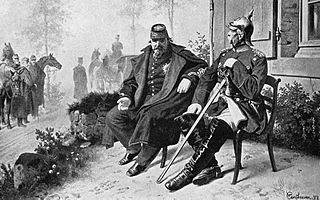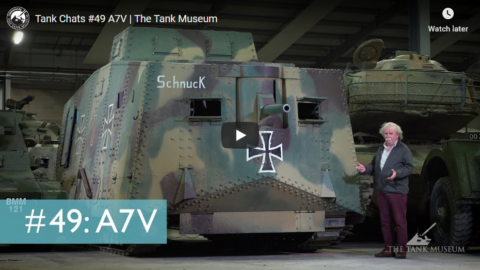Rex Krueger
Premiered 4 hours agoMore Video and Exclusive Content: http://www.patreon.com/rexkrueger
Get my wood turning book: http://www.rexkrueger.com/book
Tools used in this project (affiliate) || Bowl Gouge: https://amzn.to/2KUS7uZ
Skew Chisel: https://amzn.to/2Zt1WUQ
Finishing Epoxy: https://amzn.to/2WNYUJh
Face Shield: https://amzn.to/31ELxhTAlex Larson on SoundCloud: https://soundcloud.com/alex-larson-34…
Woodturning a Spiked Mace: https://www.youtube.com/watch?v=Ig4H-…
June 20, 2019
Making a Viking Shield
A Clockwork Orange – Dystopias and Apocalypses – Extra Sci Fi
Extra Credits
Published on 18 Jun 2019Go to https://NordVPN.com/ExtraCredits to get 75% off a 3 year plan and use code
ExtraCreditsto get an extra month free. Protect yourself online today!A Clockwork Orange reflects a cultural fear of society’s moral decay in the 1960s. Its usage of a mashup slang language known as “nadsat” illustrates the complexities of rebellious youth culture. Ultimately, Anthony Burgess’s work asks us to think about if or when free will should ever be suppressed, but the major differences between the book and the film version of this story present contrasting takeaways.
Where the dystopias of Brave New World and 1984 warned against the easy slide into totalitarianism, and painted for us worlds in which freedom is nearly a forgotten thing… A Clockwork Orange presents us with a protagonist who has almost an excess of freedom, and in doing so it shows us the shift in societal fears.
James Holland on the operational side of World War 2
I saved this link at the time, then life intervened and I only just re-found it now … but it’s not a time-sensitive article and the arguments he makes are still worth considering:
Studying such things in detail meant I was now looking at the operational level of war. Any conflict — or business for that matter — is understood to be conducted on three levels. The first is the strategic — that is, the overall aims and ambitions. The second is the tactical: the coal face, the actual fighting, the pilot in his Spitfire or man in his tank. And the third is the operational — the nuts and bolts, the logistics, economics and the supply of war.
Almost every narrative history of the war ever published almost entirely concentrates on the strategic and tactical levels, but gives scant regard to the operational, and the result is a skewed version of events, in which German machine guns reign supreme and Tiger tanks always come out on top.
Studying the operational level as well, however, provides a revelatory perspective. Suddenly it’s not just about tactical flair, but about so much more. Britain, for example, decided to fight a highly mechanical and technological war. “Steel not flesh” was the mantra and that’s why the British had a small army, yet still ensured it was 100-percent mechanized. They also developed a vast air force and built a staggering 132,500 aircraft during the war — and that’s 50,000 more than the Germans. Until the start of 1944, the priority for manpower in Britain was not the army or navy or even air force, but the Ministry of Aircraft Production. Well-fed men and women were kept in the factories.
Germany, on the other hand, was very under-mechanized but had a vast army, which meant it was dependent on horse-power and foot-slogging infantrymen. As a result of so many German men at the front, their factories were manned by slaves and POWs, who were underfed and treated abominably, and whose production capacity was affected as a result.
And if the ability to supply war was key, then in the war in the West, it was the Battle of the Atlantic that was the decisive theater. Yet Germany built a surface fleet before the war, which could never hope to rival Britain or France and in doing so neglected the U-boat arm. Despite sinking substantial amounts of British supplies in 1940, it was still nothing like enough to even remotely force Britain to her knees. In truth, there were never enough U-boats to more than dent the flow of shipping to Britain. In fact, out of 18,772 sailings in 1940, they sank just 127 ships, that is, 0.7 percent, and 1.4 percent in the entire war.
Tank Chats #49 A7V | The Tank Museum
The Tank Museum
Published on 20 Mar 201821 March 1918, was the action debut of the German A7V tank during the First World War.
One hundred years later, historian David Fletcher talks through the vehicle and its history. The Tank Museum’s A7V is a replica, which can be seen running at Museum events, like TANKFEST.
Support the work of The Tank Museum on Patreon: ► https://www.patreon.com/tankmuseum
Or donate http://tankmuseum.org/support-us/donateVisit The Tank Museum SHOP: ►https://tankmuseumshop.org/
Twitter: ► https://twitter.com/TankMuseum
Tiger Tank Blog: ► http://blog.tiger-tank.com/
Tank 100 First World War Centenary Blog: ► http://tank100.com/ #tankmuseum #tanks
QotD: Elizabeth Warren
Elizabeth Warren, a smug Harvard professor, is no populist. She doesn’t have an iota of Bernie Sanders’ authentic empathic populism — but Sanders will be too old to run next time around. I tried to take Warren seriously during the run-up to the primaries, but her outrageous silence about Sanders’ candidacy when he was battling the corrupt Hillary machine made me see Warren as the facile opportunist that she is. She craftily hid from sight throughout the primaries — until Hillary won the nomination. Then all of a sudden, there was bouncy, grinning Warren, popping in and out of Hillary’s Washington mansion as vice-presidential possibilities were being vetted. What an arrant hypocrite! Warren stands for nothing but Warren. My eye is on the new senator from California, Kamala Harris, who seems to have far more character and substance than Warren. I hope to vote for Harris in the next presidential primary.
Camille Paglia, “Prominent Democratic Feminist Camille Paglia Says Hillary Clinton ‘Exploits Feminism'”, Washington Free Beacon, 2017-05-15.








